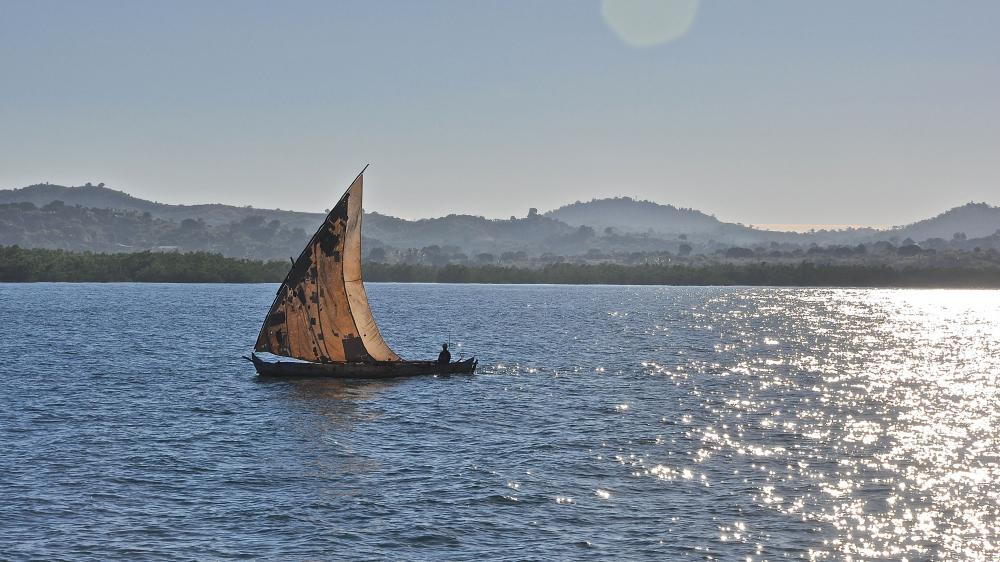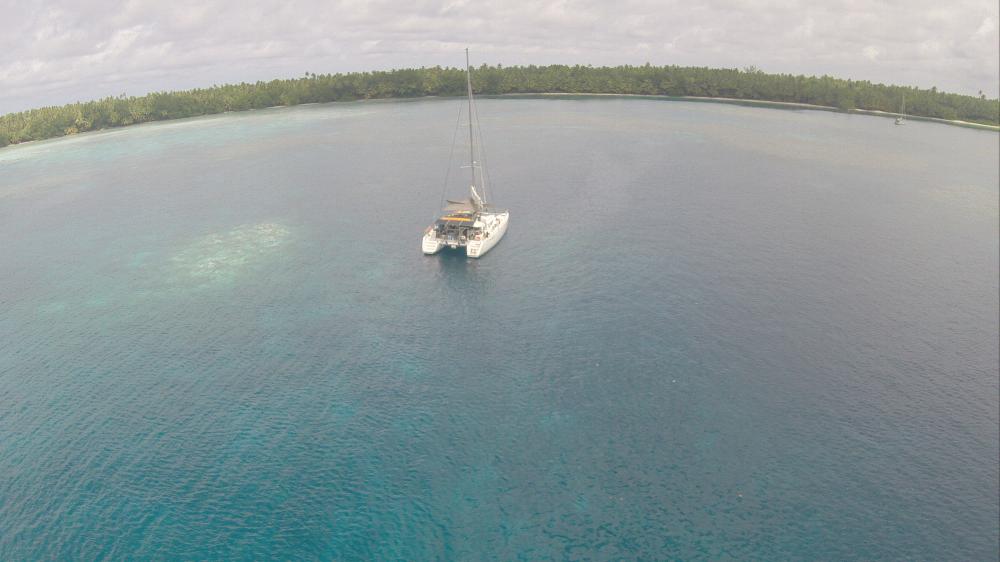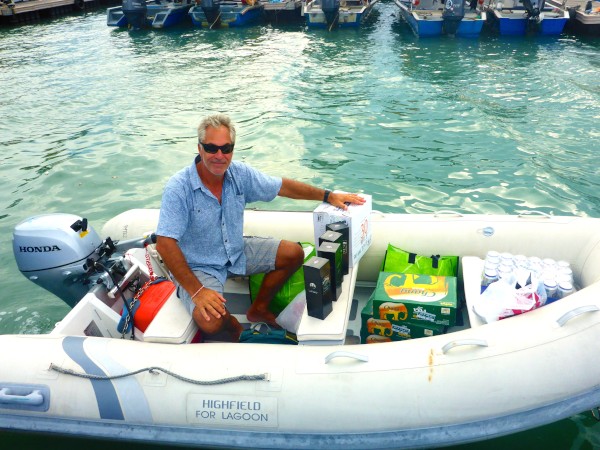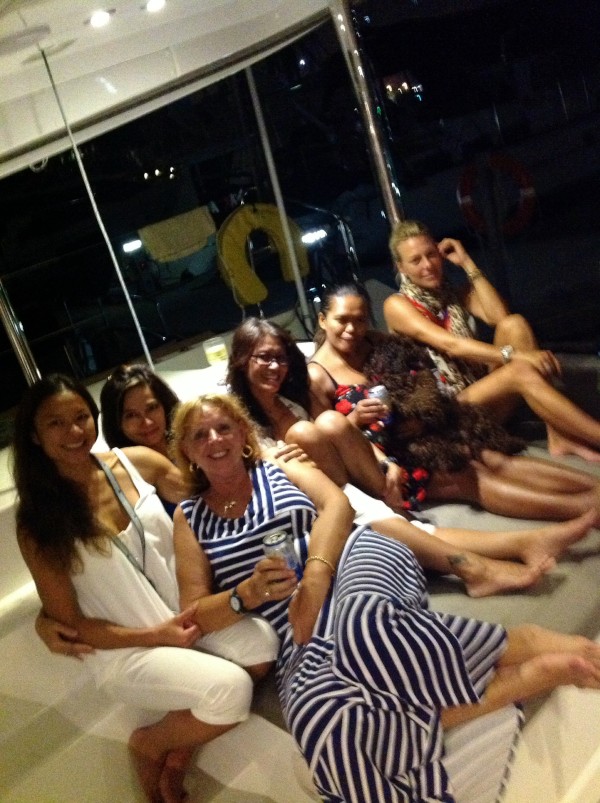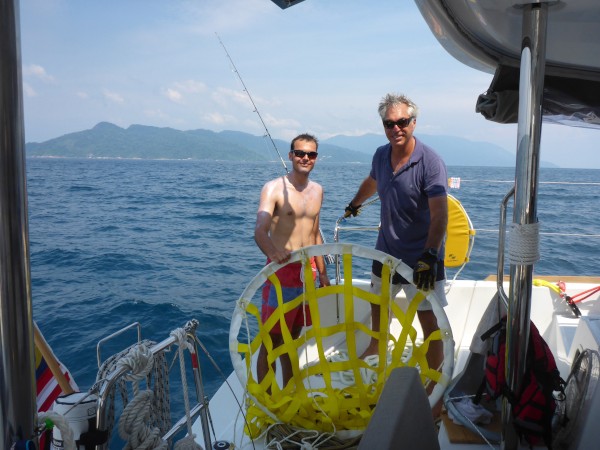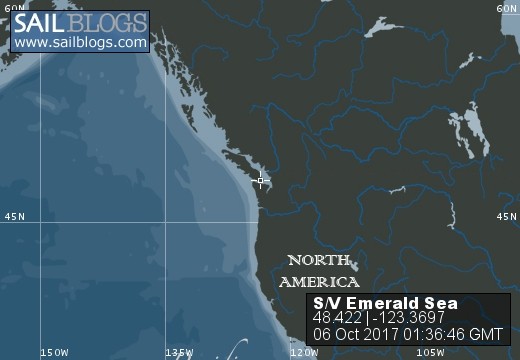
Aroundoceans with SV Emerald Sea
Our journey on water
25 March 2018 | Victoria. British Columbia
05 October 2017 | Victoria BC
24 August 2017 | Victoria, British Columbia, Canada
27 July 2017 | Reeds Bay, Hilo, Hawaii
10 July 2017 | Reeds Bay, Hilo, Hawaii
22 June 2017 | Bora Bora, French Polynesia
18 June 2017 | Bora Bora, French Polynesia
12 June 2017 | Humane, French Polynesia
05 June 2017 | Moorea, French Polynesia
05 June 2017 | Tahiti
07 May 2017 | Tahiti, French Polynesia
21 April 2017 | Fakarava, Tuamotu's, French Polynesia
05 April 2017 | Tahanea Atoll. Tuamotu's, French Polynesia
05 April 2017 | Makemo Atoll, Tuamotu's, French Polynesia
07 March 2017 | Rikitea, Mangareva, Gambier Islands, French Polynesia
20 February 2017 | Rikitea, Gambier Islands, French Polynesia
14 January 2017 | Playita, Panama City, Panama
02 January 2017 | La Plait, Panama City
17 December 2016 | Isla Nargana
16 December 2016 | San Blas, Panama
Passage Salvador to F. de Noronha
14 April 2016 | 03 49.800S: 33 24.400W
Steve
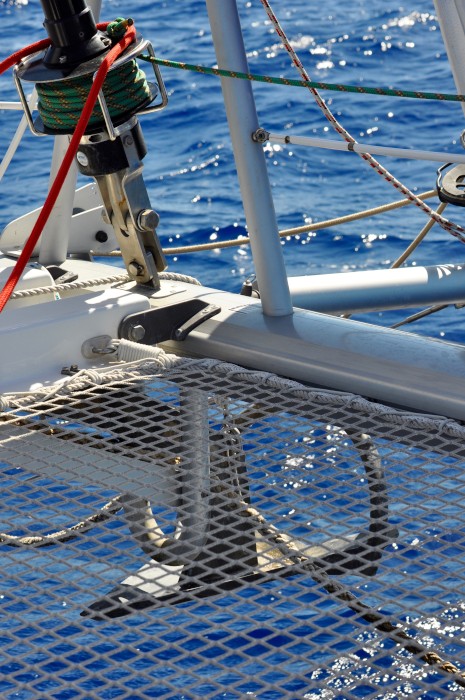
Been hangin' around salty sailors
I been learning about squall (behavior)
I been talkin' to forecasters
Been workin' on reefing
Uligan, Port Louis and Hellville too Running back to Saskatoon Cape Town, Jamestown and Salvador too Sing another salty tune, Sing another salty tune
[Steve's alternative to The Guess Who's 'Running Back to Saskatoon']
Following a fuel top-up at Bahia Marina and a good conversation with Miguel, a local delivery captain about local conditions, strategy and F de Noronha, we tossed the ropes and leisurely sailed along the west side of Salvador. There was a lot of heavy cloud cover and showers about with erratic winds over Salvador that morning. South of Salvador's peninsula there is an extensive sand bar, cardinal marked, and we skirted around it in 10-20m WD and then turned out to open ocean. Looking at the forecast I decided to get at least 20Nm off the coast before heading for FdN for a few reasons: get away from the coastal influence on the weather, get past the limits of the shallow water fisherman (they mostly fish in < 50m) and try and pick up some of that north set current.
Our first night out was a prelude of what's to come. Squalls! In general, squalls tend to build up in the afternoon as the warm moist air rises into the cooler air above, then eventually the air mass will cool enough to begin falling creating (sometimes) a strong downdraft. They begin to expel their wind and rain, along their course, in the coolness of the evening and thru to first light (but also during the day), and stop when the air begins to warm up again from the sun. It's during these hours that we have to be on guard and work our strategies. Determining whether it's an isolated squall or a frontal system can be a bit trickier at night. Normally we can see isolated events or a frontal system on our HD colour radar and track them or see them in the distance as they start to cover the stars and then we try to position the boat to avoid the strong ones and, if possible, to try and avoid the dead air behind the squall that will just stop the boat (motors on!). We notice the isolated ones travel between 10- 20kts. We would also reef down or if it's a large squall we will lower the main altogether and sail along with our genoa as that's easier to reef if needed. As we are in the southern hemisphere, and we see a strong squall approaching from the east, we know it has a tendency to take a slight southerly track so I would try to get on the 'equator' side of it, if given the time, or if not, then we have to prepare the boat to be hit. Our first night out we encountered 6 squalls. All rather light winds of max 20- 22kts for short periods of 10-20mins. A few hit us and a few I managed to skirt around with the bonus of catching the peripheral winds from north side of the squall that gave us a wee speed boost for 10-20 mins. None had lightening. Good practice I say! We have to stay vigilant as these squalls are forecasted to become more intense as we head north into the ITCZ (inter-tropical convergence zone). A few of our cruiser friends who passed this area a few months back damaged sails and rigging so we know it can get intense. Anyway, I've been brushing up, re-familiarising myself with squall strategies. By the time we arrived to FdN we counted 16 ... including the 'Wall of Squalls'.... this one was a complete arc around us, didn't know which way to go ... we just buckled down and put our best foot forward!
Overall, the sailing conditions have been very pleasant for Emerald. For the first 3-4 days we had winds between 4-17kts where we motored when we couldn't achieve at least 2kts SOG. We saw a trend where the night winds tended to be stronger, 12- 17kts, verses the day winds at a lighter 3-10kts. All with low swell height - so we had some good periods where we were clipping along at steady 8-9kts SOG.
Well, things haven't gone so well for Rose. She's had her worse bout of seasickness on this trip which is unusual as we had reasonably calm seas. She did real well crossing the Indian Ocean. She took her Stergeron the night before departure and another one the first day at sea and a third on the second day, but it hasn't been so effective. She spends time up at the flybridge, which is a great place to be if your seasick and you can steer which is also a remedy. Rose has tried the little 'behind the ear' patches (scopolin - sp?) that were effective but then they gave her a bad rash or possibly an allergic reaction. Rose has tried them all: ginger (in various forms), acupressure, a chewing gum given to use from SV Mahi-Mahi, etc. It takes her a good few days at sea before her legs stop shaking.
We had many AIS targets as the route along the east Brazilian coast is a shipping highway. A few of these were on collision courses and I'd call them up they were glad to alter course (boats under sail have right of way). Except one.... and I won't mention names. With a CPA of 23m at 8nm out I called them up various times and they didn't answer the VHF at all and didn't change course. So I altered my course, of course, and it wasn't until they were 2nm directly off my stbd side did I finally get contact with them where they denied hearing me. I told them!
Land Ho! In the afternoon of 10th April, we spotted the petit-majestic finger rock of Moro do Pico while some 25nm away and approached the nature reserve island from the SW corner, then along the NW coast, towards Baia do S. Antonio. However, our arrival at the anchorage area was 2030hrs and thus dark, squalls hovering around, no moonlight, so I elected to stay off the coast and heave-to for the night and make a visible approach in the morning.
A note on an alternative method of heaving-to. The past few times we hove-to we did so with the genoa sail (mainsail down) and had only marginal success in keeping this catamaran in a circa 40 degree attitude toward the wind (it would tend to settle in at 60-80 degrees which is close to an uncomfortable beam-to the wind/waves). This time I tried it with the genoa completely rolled in and with the mainsail triple reefed. After getting it all setup properly Emerald settled nicely between a 30-60 degree to the wind. Thanks Dave from NZ for that great tip!
The passage took 5.4 days to complete, arriving April 10th, logging 711Nm. Excluding the overnight hove-to off Noronha. The averages on that work out to be 132nm per day and 5.5kts SOG.
I been learning about squall (behavior)
I been talkin' to forecasters
Been workin' on reefing
Uligan, Port Louis and Hellville too Running back to Saskatoon Cape Town, Jamestown and Salvador too Sing another salty tune, Sing another salty tune
[Steve's alternative to The Guess Who's 'Running Back to Saskatoon']
Following a fuel top-up at Bahia Marina and a good conversation with Miguel, a local delivery captain about local conditions, strategy and F de Noronha, we tossed the ropes and leisurely sailed along the west side of Salvador. There was a lot of heavy cloud cover and showers about with erratic winds over Salvador that morning. South of Salvador's peninsula there is an extensive sand bar, cardinal marked, and we skirted around it in 10-20m WD and then turned out to open ocean. Looking at the forecast I decided to get at least 20Nm off the coast before heading for FdN for a few reasons: get away from the coastal influence on the weather, get past the limits of the shallow water fisherman (they mostly fish in < 50m) and try and pick up some of that north set current.
Our first night out was a prelude of what's to come. Squalls! In general, squalls tend to build up in the afternoon as the warm moist air rises into the cooler air above, then eventually the air mass will cool enough to begin falling creating (sometimes) a strong downdraft. They begin to expel their wind and rain, along their course, in the coolness of the evening and thru to first light (but also during the day), and stop when the air begins to warm up again from the sun. It's during these hours that we have to be on guard and work our strategies. Determining whether it's an isolated squall or a frontal system can be a bit trickier at night. Normally we can see isolated events or a frontal system on our HD colour radar and track them or see them in the distance as they start to cover the stars and then we try to position the boat to avoid the strong ones and, if possible, to try and avoid the dead air behind the squall that will just stop the boat (motors on!). We notice the isolated ones travel between 10- 20kts. We would also reef down or if it's a large squall we will lower the main altogether and sail along with our genoa as that's easier to reef if needed. As we are in the southern hemisphere, and we see a strong squall approaching from the east, we know it has a tendency to take a slight southerly track so I would try to get on the 'equator' side of it, if given the time, or if not, then we have to prepare the boat to be hit. Our first night out we encountered 6 squalls. All rather light winds of max 20- 22kts for short periods of 10-20mins. A few hit us and a few I managed to skirt around with the bonus of catching the peripheral winds from north side of the squall that gave us a wee speed boost for 10-20 mins. None had lightening. Good practice I say! We have to stay vigilant as these squalls are forecasted to become more intense as we head north into the ITCZ (inter-tropical convergence zone). A few of our cruiser friends who passed this area a few months back damaged sails and rigging so we know it can get intense. Anyway, I've been brushing up, re-familiarising myself with squall strategies. By the time we arrived to FdN we counted 16 ... including the 'Wall of Squalls'.... this one was a complete arc around us, didn't know which way to go ... we just buckled down and put our best foot forward!
Overall, the sailing conditions have been very pleasant for Emerald. For the first 3-4 days we had winds between 4-17kts where we motored when we couldn't achieve at least 2kts SOG. We saw a trend where the night winds tended to be stronger, 12- 17kts, verses the day winds at a lighter 3-10kts. All with low swell height - so we had some good periods where we were clipping along at steady 8-9kts SOG.
Well, things haven't gone so well for Rose. She's had her worse bout of seasickness on this trip which is unusual as we had reasonably calm seas. She did real well crossing the Indian Ocean. She took her Stergeron the night before departure and another one the first day at sea and a third on the second day, but it hasn't been so effective. She spends time up at the flybridge, which is a great place to be if your seasick and you can steer which is also a remedy. Rose has tried the little 'behind the ear' patches (scopolin - sp?) that were effective but then they gave her a bad rash or possibly an allergic reaction. Rose has tried them all: ginger (in various forms), acupressure, a chewing gum given to use from SV Mahi-Mahi, etc. It takes her a good few days at sea before her legs stop shaking.
We had many AIS targets as the route along the east Brazilian coast is a shipping highway. A few of these were on collision courses and I'd call them up they were glad to alter course (boats under sail have right of way). Except one.... and I won't mention names. With a CPA of 23m at 8nm out I called them up various times and they didn't answer the VHF at all and didn't change course. So I altered my course, of course, and it wasn't until they were 2nm directly off my stbd side did I finally get contact with them where they denied hearing me. I told them!
Land Ho! In the afternoon of 10th April, we spotted the petit-majestic finger rock of Moro do Pico while some 25nm away and approached the nature reserve island from the SW corner, then along the NW coast, towards Baia do S. Antonio. However, our arrival at the anchorage area was 2030hrs and thus dark, squalls hovering around, no moonlight, so I elected to stay off the coast and heave-to for the night and make a visible approach in the morning.
A note on an alternative method of heaving-to. The past few times we hove-to we did so with the genoa sail (mainsail down) and had only marginal success in keeping this catamaran in a circa 40 degree attitude toward the wind (it would tend to settle in at 60-80 degrees which is close to an uncomfortable beam-to the wind/waves). This time I tried it with the genoa completely rolled in and with the mainsail triple reefed. After getting it all setup properly Emerald settled nicely between a 30-60 degree to the wind. Thanks Dave from NZ for that great tip!
The passage took 5.4 days to complete, arriving April 10th, logging 711Nm. Excluding the overnight hove-to off Noronha. The averages on that work out to be 132nm per day and 5.5kts SOG.
Comments
| Vessel Name: | Emerald Sea |
| Vessel Make/Model: | Lagoon 450 |
| Hailing Port: | Singapore |
| Crew: | Steve P, Rosemarie P |
| About: | |
| Extra: | |
| Social: |
Emerald Sea's Photos - Main
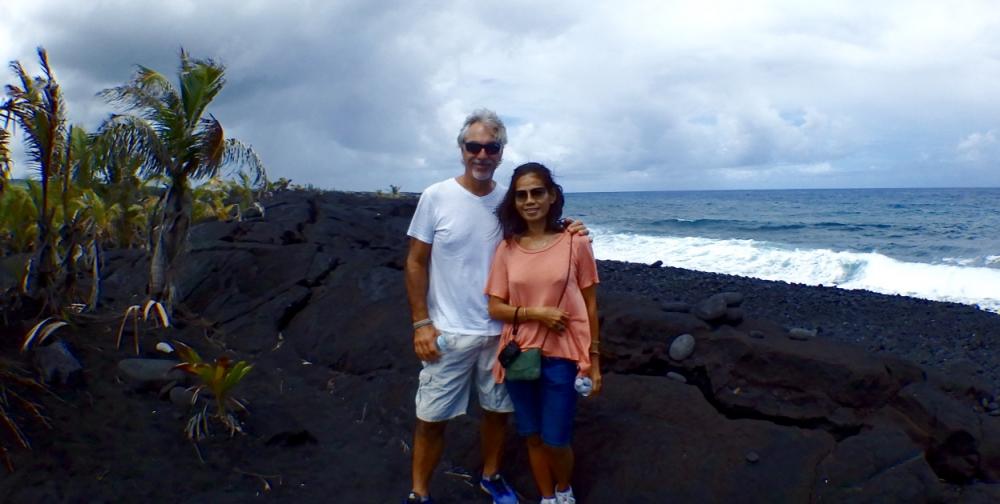 |
Hawaii was a stop over on our way to Canada however we were pleasantly surprised and enjoyed our 3 weeks in Big Hawaii.
13 Photos
Created 27 July 2017
|
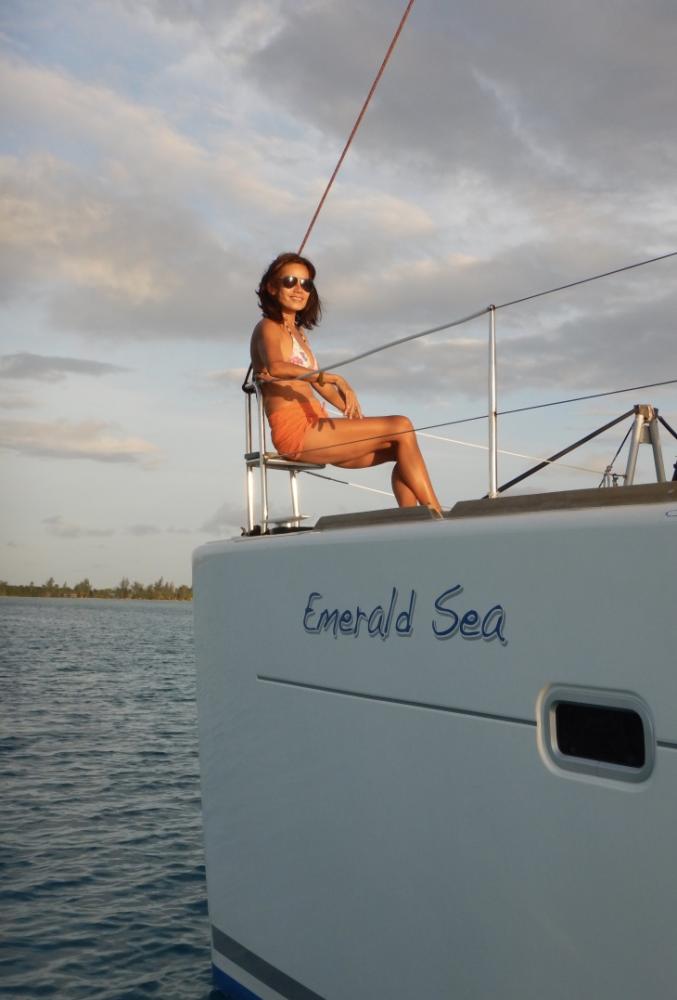 |
A selection from 1000's of photos from out 6 months in French Polynesia. But were missing the photos from Gambier, Makemo, Tahanea.....
17 Photos
Created 27 July 2017
|
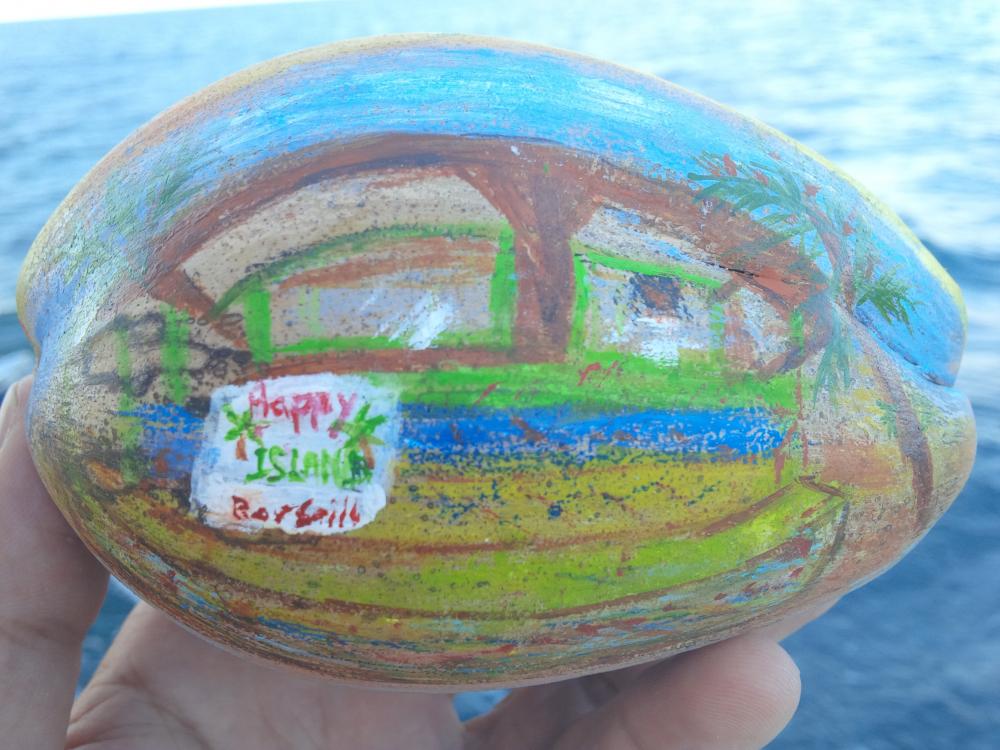 |
Barbados, Martinique, St Vincent & the Grenadines, Grenada. A few of our photos captured here.
10 Photos
Created 22 October 2016
|
Aroundoceans with S/V Emerald Sea
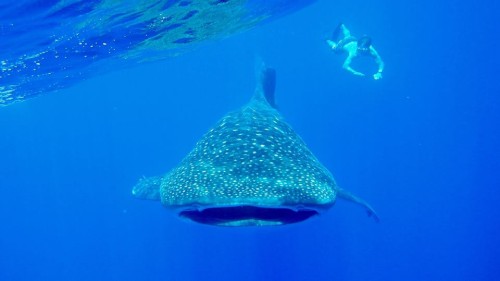
Who: Steve P, Rosemarie P
Port: Singapore
Table of Contents
TEST













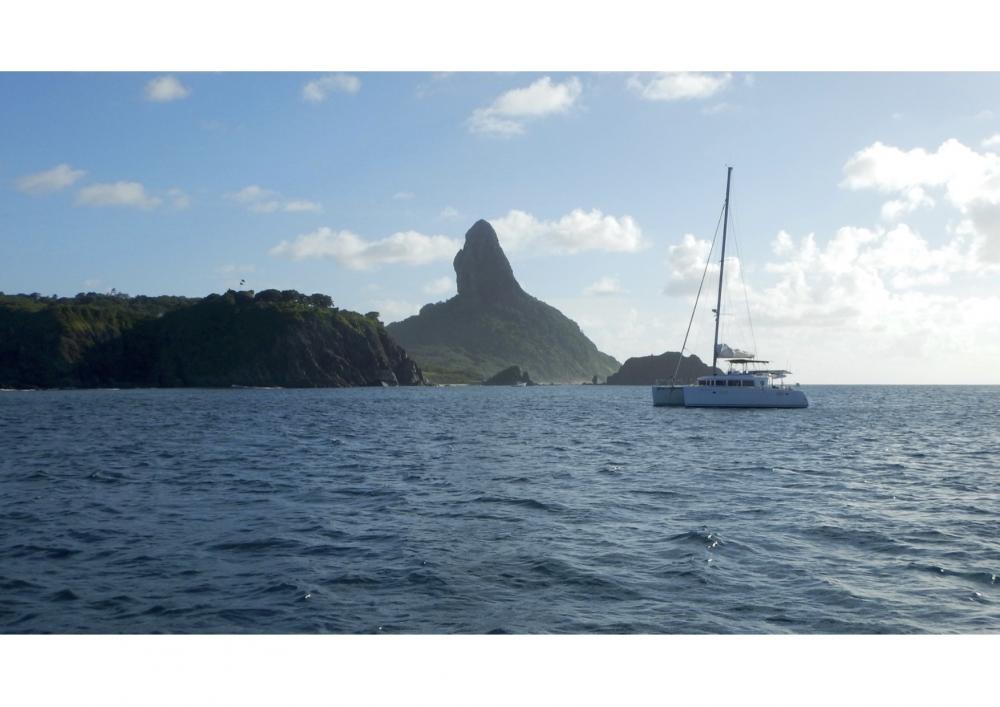
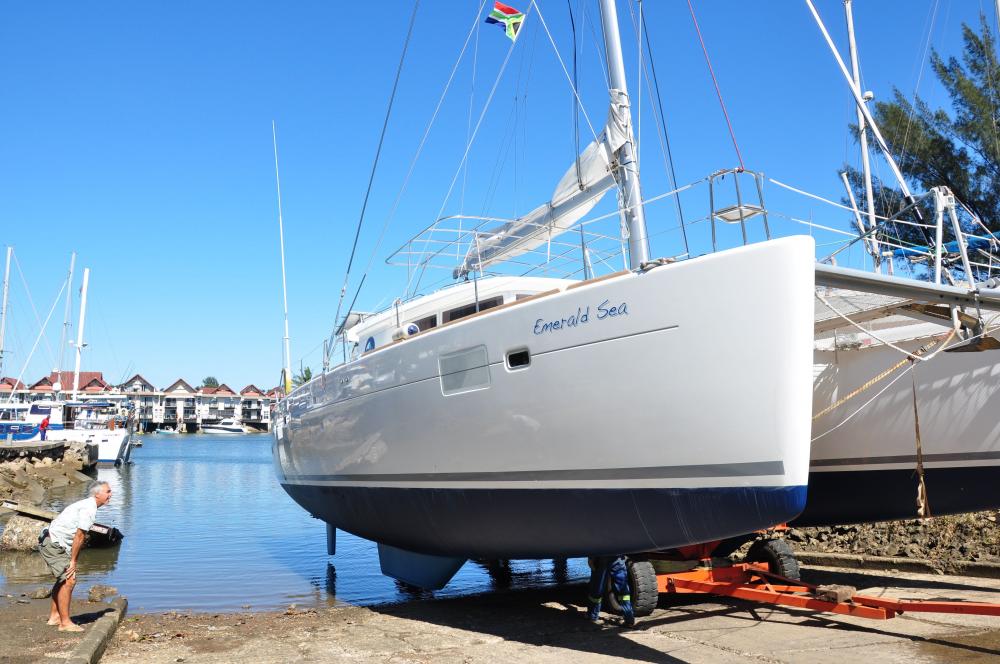

.jpg)
